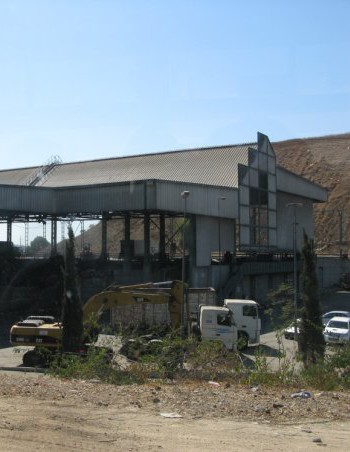The "Mountain of Crap" Becomes a Park
The "Mountain of Crap," the nickname for Hiriya landfill, and Freshkills share more than just evocative names. They are also two of the most outstanding examples of landscape transformation, in this case, urban landfills that have become parks – Ariel Sharon Park, outside of Tel Aviv, Israel and Freshkills Park, in Staten Island, New York.
Both were the wastelands of their respective cities. They began receiving garbage over 60 years ago, and closed at nearly the same time – Hiriya in 1999 and Freshkills in 2001. When complete, Ariel Sharon Park – like Freshkills – will be roughly three times the size of Central Park. The two parks signed a "twin parks" agreement last year to share information and plan cooperatively. Leaders from both parks will also present at April's Greater & Greener Urban Parks Conference in San Francisco.
While much is known about Freshkills, less is known about the history of Ariel Sharon Park, at least in the U.S. Hiriya landfill is some 200-feet-high given because it sits on 25 million tons of waste. The landfill is located directly under the flight paths to Tel Aviv's Ben-Gurion Airport. As massive flocks of birds swarming Hiriya caused a few too many close-misses and toxic runoff leached into streams adjacent to the landfill, public outcry to close the landfill grew.
By its final year of operation in 1998, Hiriya was receiving 3,000 tons of household waste per day. In 1999, it became a transfer station, and rehabilitation plans began in 2001. But even as park development move forward, the site continues waste operations. Municipal and agricultural waste is sorted and transferred at a large recycling center that captures methane from organic waste in anaerobic biogas digesters. The facility captures enough methane to power the entire recycling facility and sell back excess electricity to the Tel Aviv grid.
As much as 80 percent of incoming waste is reportedly recycled or reused by the Arrow Bio management company.
An environmental education center near the recycling facilities features landfill-derived art from sponsored competitions alongside other interpretive resources.
As a first step, landscape architect Peter Latz, who is famous for Landscape Park Duisborg-Nord in Germany, designed an innovative "bio-plastic" layer covered with gravel and a meter of soil to protect wildflowers and vegetation from the underlying methane and other contaminants. Rainwater collection pools between the bio-plastic and soil layers will provide a source for the irrigation system for trees.
Because it lies in the Ben-Gurion flyway and is in the center of the road connecting Tel Aviv to Jerusalem and the road connecting Tel Aviv to Haifa, the area is ill-suited for housing, even without the landfill. So in addition to the mountain capping the landfill itself, surrounding agricultural fields and waterways are being developed as wildlife habitat with man-made ponds, which will be accessible via bike and walking trails.
The paths winding through orchards, agricultural terraces, and native plantings will be laid on beds of recycled material. A lake and re-directed water systems will help alleviate flooding issues for South Tel Aviv and Holon, and a promenade and 50,000-seat amphitheater will draw people. Laura Starr, ASLA, Starr Whitehouse Landscape Architects, led the initial international planning and design charette to create a vision for the park.
See a brief video outlining this vision:
Hiriya took its name from the former Arab village, al-Hariya, whose residents were evacuated prior to the 1948 Arab-Israeli War. While its counterpart, Jaffa Landfill Park, designed by Braudo-Maoz Landscape Architecture of Tel Aviv, Israel, used the removal of a landfill and reconstruction of a seashore to ameliorate a painful past and serve as a springboard for social discourse, it's unclear whether designs for the park include any official acknowledgement of Hiriya's pre-landfill history.
What cannot be hidden is Hiriya's mountain of crap. If all goes as planned, though, it will serve as a beacon for environmental restoration.
Yoshi Silverstein, Associate ASLA, is founder of Mitsui Design.







